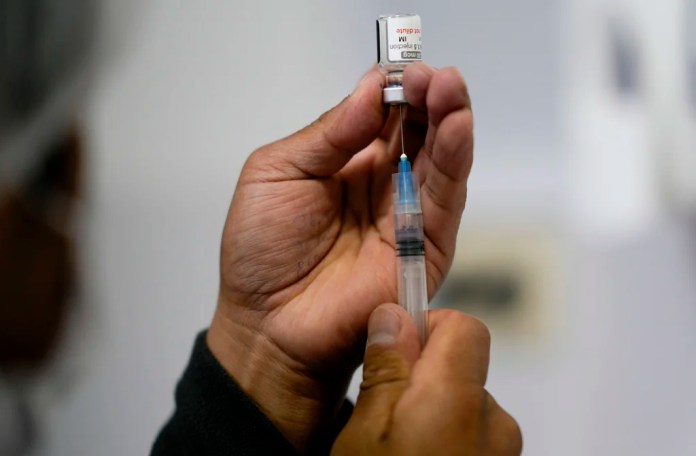Immune Exhaustion Emerges After 3rd Vaccine Dose: Current Findings
Vaccines have been upheld as the best strategy for dealing with infectious diseases, but that’s largely because of a limited understanding of the immune system and how to best complement and support its function. Although our bodies are able to distinguish the wheat from the chaff when infected pathogens are present or vaccines stimulate an immune response, there are many factors that could compromise this ability.
A study Published in Science Immunology January 2023 Based on the way they train our immune systems, incremental doses (first submitted August 2022) may prove to be one of these factors. In this instance, the immune response seemed to feel falsely secure after receiving the booster vaccine. The booster vaccine is supposed teach the immune systems how to fight the virus. Unfortunately, in this case, it seemed that the immune system has learned that it doesn’t need to mount a strong counterattack. Worse, vaccine boosters may not have any effect on people at high risk for severe infection.
IgG Subtype Composition After Vaccination
According to the study, the third dose of the mRNA vaccines seems to be linked with a class switch in subtypes of immunoglobulin G (IgG), the dominating serum antibody in our immune system, which raises the question of immune exhaustion. A class switch is when B cells redirect their efforts to producing IgG. They produce IgM and generic immunoglobulin cells to start. They then switch to IgG to fight the infection once they realize the pathogen has become more difficult than they expected.
IgG is a crucial serum antibody and makes up around 80 percent of all antibodies in the immune system. When class switching happens, B cells will release different types IgG in place of less effective immunoglobulin cells. The IgG ratio may vary depending on how severe the infection is.
IgG, which is a more powerful fighter in our immune system’s defenses, has the ability to opsonize complements. It attaches to pathogens and infected cells, and instructs killer cell to swallow them through phagocytosis. It’s also the only antibody that crosses into the placenta, playing a critical role in protecting the unborn fetus.
However, IgG is split up into four major subtypes—denoted IgG1 through IgG4—and each has its own strengths and limitations.
IgG1 accounts for the majority of serum IgG. This is because it has the highest immune properties. These two IgG members are also the most potent.
IgG4 is considered one of the weakest types, as it doesn’t do as well in attracting immune cells responsible for eliminating invaders.
Research shows The IgG4 content is usually around 4 percent. This number was confirmed by the study on patients who received the second dose of vaccine after five months.
Right after the second dose, IgG4 levels were at 0.04 percent while IgG1 and IgG3—the most potent members in the IgG family—made up 96.55 percent of all IgG, according to the aforementioned Science Immunology paper.
The body interprets this second dose of vaccine as a serious infection, and will produce the most effective IgG to fight the simulated infection. Things look slightly different after the booster shot.
In the study, the percentage of IgG4 in the blood serum rose to unexpectedly high levels after the third dose. IgG4 levels reached 13.91 percent ten days after the last vaccination and then rose to 19.27% five months later. IgG1 as well as IgG3 levels also dropped, which indicates a significant change of blood serum antibody composition.

This isn’t good, as higher levels of IgG4, without the ability to stimulate immune cells, could indicate immune exhaustion. It’s also an indication that the immune system intentionally dampened the response starting with the third dose of the vaccination.
On the other hand, although IgG3 and IgG1 contribute the most to immune mechanisms, the downside is that they’re costly to produce and can quickly wear out the body. In contrast, IgG4 isn’t as effective but it’s more economical to produce.
Outside intruders are always a top priority for the immune system. However, efficiency must also be considered. The amount of each IgG type produced varies depending on the infection.
Science Immunology found that high IgG4 levels even after the third dose indicate that the immune system has been worn down by the repeated vaccinations. The body reacts more to the third dose and uses the less effective IgG4 as a response.
The development of IgG4 is more dangerous than usual and can pose a risk to people who come in contact with the true virus. COVID-19 can become a very serious disease for those with chronic conditions. The body will begin to treat the SARS/CoV-2 vaccine as if it were a boy who is crying wolf. What if the real thing knocks at the door?
The vaccine is meant to train the immune system’s memory cells so that the next time something similar comes along, they know how to quickly defend the immune system. This process is called antibody acquisition. This study shows that COVID-19 is no longer considered a serious virus infection by the body after the booster shot. The boosters may not have any effect in certain people.
Rates of Antibody Acquisition ‘Extremely Low’ Study Show for Organ Transplant Recipients
One group of people who might gain the least from vaccination seems to include those who are immunocompromised, such as organ transplant recipients—people who regularly take immunosuppressants as a part of post-operational procedures.
A Nature published a study The results showed that the antibody acquisition rates for COVID-19 were high. “extremely low” In kidney transplant patients. This finding contradicts the purpose of the vaccine, as it’s meant to induce antibody acquisition.

Similar reports have been reported elsewhere as well, especially with regard to the newer COVID-19 variants. An observational study claiming to be the largest when analyzing four-dose vaccinated organ transplant recipients shows that the mRNA vaccine booster demonstrates a “lack of formal neutralization” against “variants of concern including Omicron.”
Data published by Elsevier also shows that antibody neutralization against the Omicron coronavirus variant has seen a 15- to 20-fold reduction when compared with the wild-type virus in transplant recipients. These findings are of grave concern.
The U.S. Centers for Disease Control and Prevention still recommends that immunocompromised people receive a COVID-19 vaccine, as well as get their vaccine boosters.
According to data published in the medical journal Transplantation, during the recent Omicron wave, although COVID-19 cases have increased for organ transplant recipients, the death rate of this population has dropped fivefold.

However, is this reduction due to repeated vaccination or to the reduced pathogenicity of Omicron variants? Is it really effective to drive vaccination campaigns for the immunocompromised, based on the trifling level of antibody acquisition? Can the benefits of repetitive boosting outweigh the increased risk of side effects?
It’s really time to reconsider what place the COVID-19 vaccines should take. Are we underestimating the wisdom of our immune system? This stance is similar to that taken in a previous article that mentions how “negative efficacy” should have stopped vaccine recommendations in their tracks.
Now, researchers are saying that vaccines, especially boosters, fail to have a significant effect on the immunocompromised—the very group of people especially susceptible to severe disease and death. We need to stop placing the mRNA shots on a pedestal and consider all options in response to SARS-CoV-2, such as focusing on bolstering our natural immune system and holistic well-being.
Views expressed in this article are the opinions of the author and do not necessarily reflect the views of The Epoch Times. Epoch Health welcomes professional discussion and friendly debate. To submit an opinion piece, please follow these guidelines and submit through our form here.
" Conservative News Daily does not always share or support the views and opinions expressed here; they are just those of the writer."





